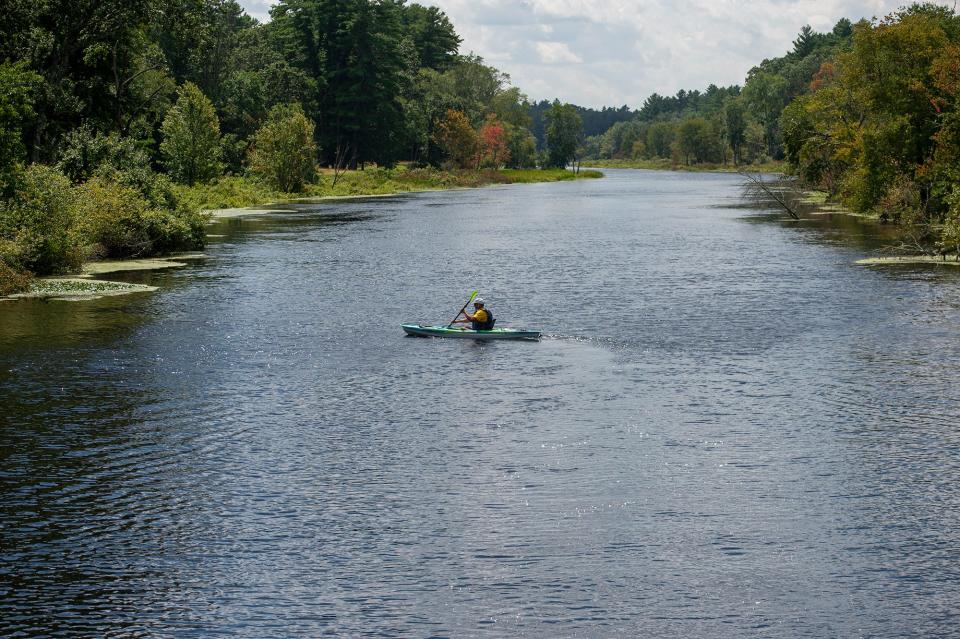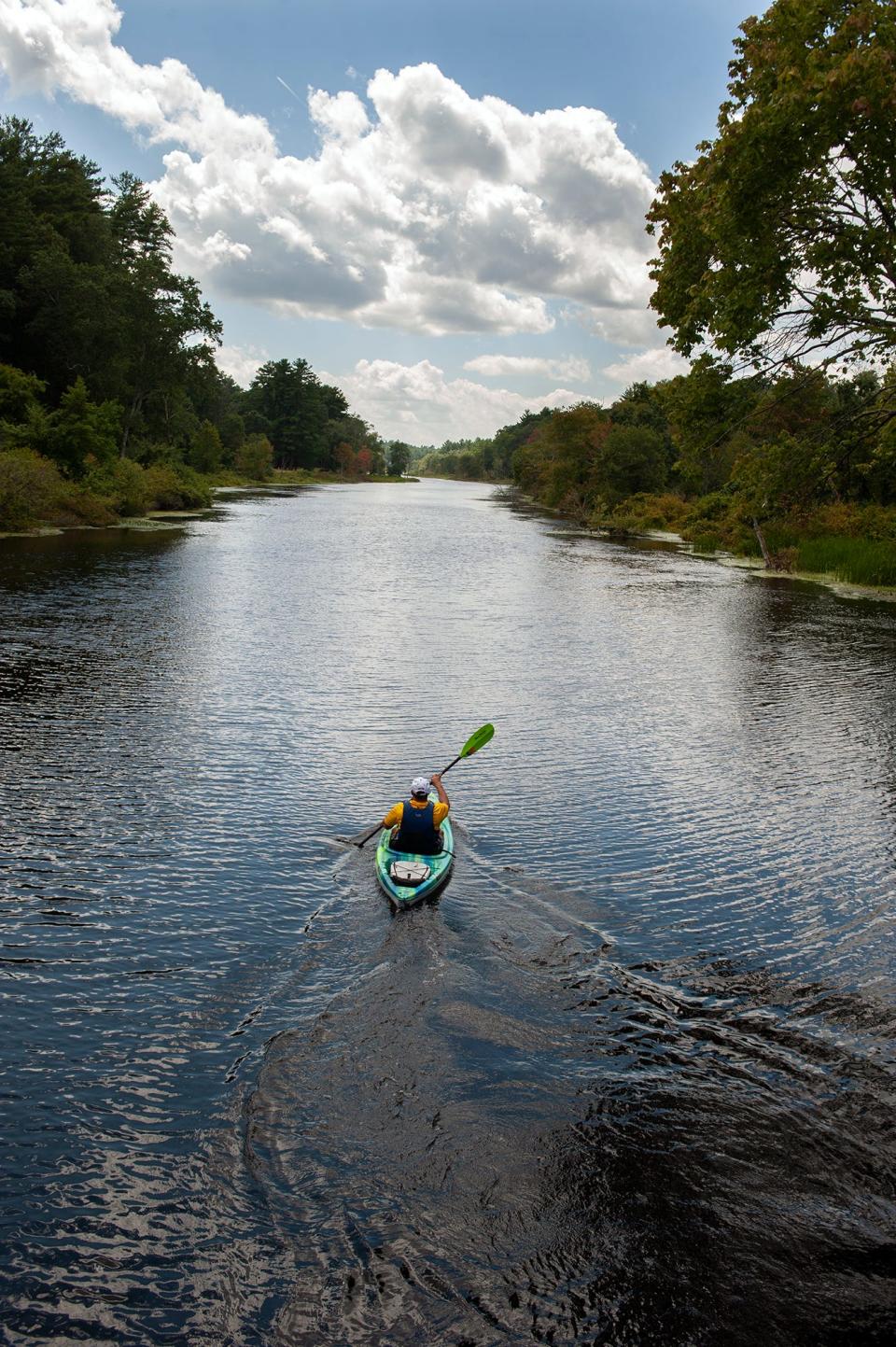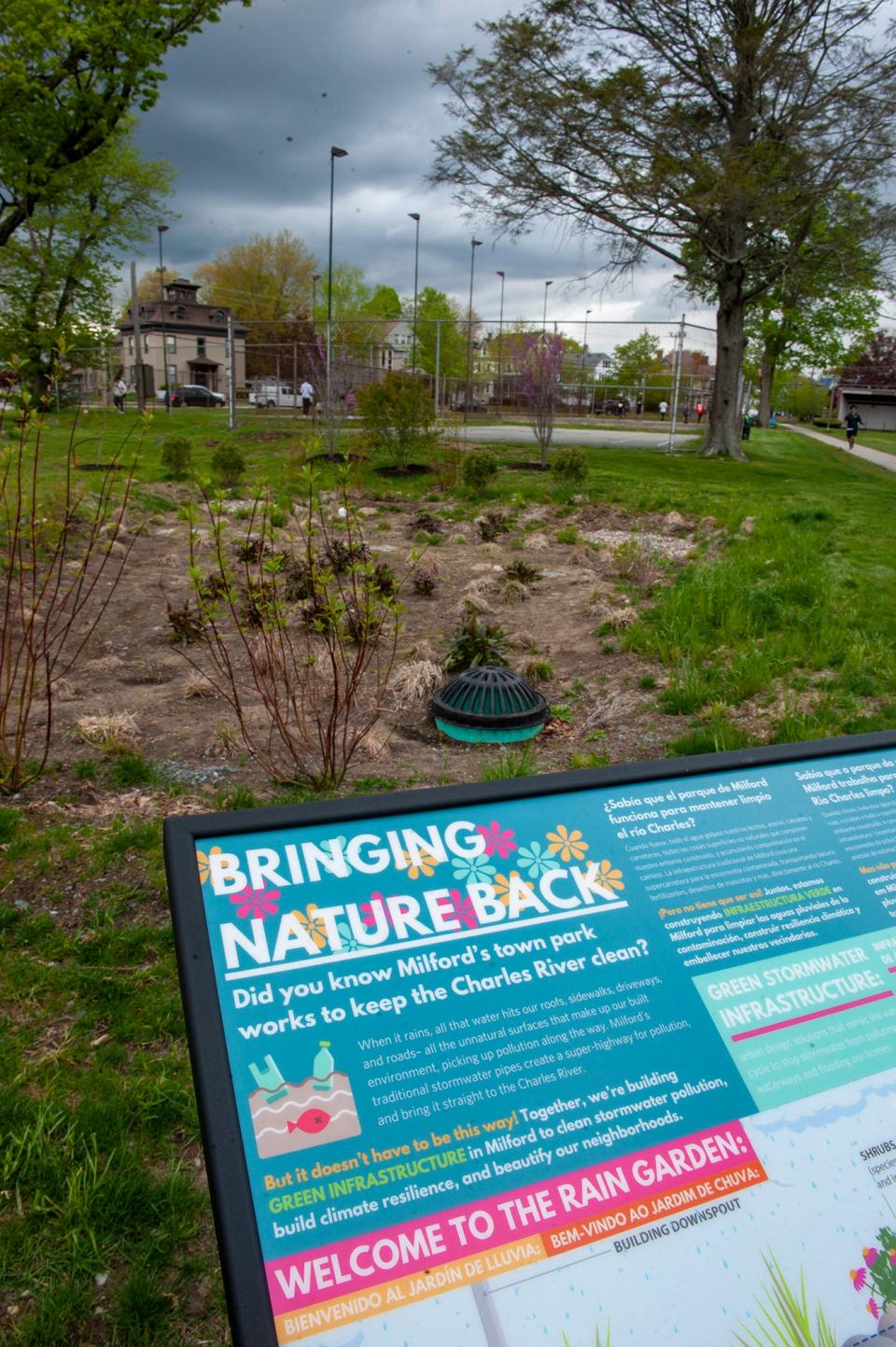Why E. coli is bringing down water quality grade in Milford area of the Charles River
MILFORD — The Greater Milford area of the Charles River received a slightly lower water quality grade than in previous years, however, there are some solutions to improve water quality.
For 2022, the Upper Watershed received a B grade. The grade is a slight decline from the previous three years. The watershed received a B+ grade in 2021 and 2020, and an A- in 2019.
"Our report card averages three years of data, so the 2022 report card incorporates two drought years and one very wet year in 2021," Watershed Scientist Marielena Lima said. "There is a lot of just variable change with weather, like precipitation. But the reason the grade actually went down from a B+ to a B, really, we attribute it to the two droughts that we had in 2020 and 2022."
Lima works with the Charles River Watershed Association, an organization dedicated to the protection and restoration of the Charles River and its watershed. The organization uses over 80 volunteers who sample the water to collect data each month.

Excessive Rainfall Forecast: Risk of rainfall exceeding flash flood guidance within 25 miles of a point
How the Charles River water quality is graded
The U.S. Environmental Protection Agency (EPA) announced the 2022 Water Quality Report Card grades for the Charles River. The grades range from A to F and are based on the percentage of time E. coli bacteria concentrations are safe for recreation, precipitation data, and weighted with a three-year average.
Starting in 2019, all 80 miles of the river began receiving grades. For grading, the river is broken up into six waterbody segments. The Upper Watershed segment is the part of the river starting in Hopkinton and flowing to Medfield. This area encompasses Hopkinton, Milford, Hopedale, Bellingham, Franklin, Medway, Millis and Medfield.
Map of Massachusetts: The U.S. Drought Monitor (USDM) is a map that shows the location and intensity of drought across the country.
Why the water quality of the Charles River matters outside of Boston
For communities surrounding the Upper Watershed, Lima explained that with high E. coli levels come potentially harmful effects on public health.
"You want to know what the water quality of the water is because when you have high levels of E. coli you usually have other potentially harmful pathogens that really affect public health," Lima said. "The Charles River, in general, is more of a boating, recreational resource, but ideally, we would want the ability and comfort to swim in the Charles River, because at one point, almost 100 years ago, people would swim in the Charles."

COVID-19 vaccine: Five former Milford hospital employees say they were unfairly fired. What they claim
Why there is more E. coli in the Charles River
The Charles River Watershed Association isn't sure where the specific sources of the higher E. coli levels are coming from, but they could come from places such as dog parks that drain off into the river or uncontrolled septic systems.
"Whatever pollution is coming from stormwater runoff, or just anything else will be more concentrated, and that's why we had higher E. coli levels.," Lima said. "In the Upper Watershed, even though the water levels are usually lower, in recent years you were getting these higher E. coli levels that aren't attributable to rain events."
Other factors, such as the threat of climate change leading to more droughts or heavier rains in the region also can affect the water quality.
'It's very hard work on the dog': Framingham Police Department's K-9 unit has become nearly a 24-7 operation
Additionally, because the Upper Watershed is the headwaters of the Charles, the Upper Watershed typically has lower water levels, Lima explained. The droughts in 2020 and 2022 caused water levels to drop, leading to higher E. coli levels.
"With water quality, it's going to be severely impacted by climate change moving forward whether we have drought years where water levels are really low, and the pollution is more concentrated or really wet years where E. coli levels are higher. Thinking about the long term, we need to do more, so we don't slide back.
Real-time river water levels: Updated data, info on the water level in Massachusetts rivers
Can the water quality of the Charles River and the Upper Watershed be improved
Despite the decrease in grades and the threat of climate change, there are still ways water quality can improve.
"Now it really comes down to the nitty-gritty details to really get us to the A's we want all throughout the watershed," Lima said. The main source of contamination is stormwater runoff, which can be reduced through the reduction of pollution that's on streets, according to Lima. Another solution is focusing on stormwater infrastructure. "It's really also just, especially with the amount of heavy rain events that we're going to get moving forward, we got to focus on stormwater infrastructure," Lima said.
Stormwater infrastructure is designed to interrupt the flow of contaminants into a water body. For example, rain gardens constructed with the help of the Charles River Watershed Association was unveiled in Milford in May.
Norfolk County, Massachusetts, Weather: County-level monthly precipitation and temperature data since 1895

The two new gardens, located at Milford Town Park, use underground storage tanks to collect stormwater, filter pollution and return the stormwater to the groundwater. The gardens and an infiltration system aimed at fighting impervious surfaces were funded through an over $400,000 grant given by the Municipal Vulnerability Preparedness Program.
Recently, the watershed association also awarded Milford with its "Clean Charles Award," during its annual meeting. Climate Resilience Specialist Robert Kearns said at the time that the infrastructure "will contribute to a reduction of 25 pounds of phosphorus and achieve significant improvements in recharging groundwater, up to 55 concrete mixer trucks worth of water per year."
This article originally appeared on MetroWest Daily News: How clean is the Charles River's watershed? 2022's water quality grade

